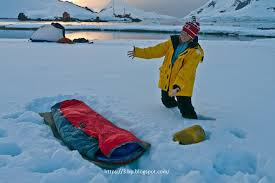Becoming a good teacher is the desire of anyone who has decided to pursue the profession as an educator. To become a good teacher, it’s important to be organized.
Create lesson plans, objectives, activities, and assessment plans well before each class day.
Get your students interested in learning by fostering a positive, supportive, yet challenging
classroom environment. To develop a good classroom emvironment is one of important factor
for the success of a teacher
This article will
describe the tips for the teachers on how to develop a good classroom environment,
as follows :
1. 1. Create a daily objective for your students.
This is your way of providing a roadmap for your students,
it shows them that you’ve put thought into the day’s work and you know where it
is heading. It's best if the objectives are clear, brief, and realistic. As
each objective is completed, remind your students of what they’ve accomplished
together.[1]
· For example, in a high school literature class, an objective
might be to complete a close reading of a particular poem by the end of the
period.
· Some teachers find it helpful to post that day’s objectives on
the board.
· It’s okay if not every objective is met every day. In some cases, it's better to follow the flow of a particular conversation, instead of
railroading back to the original subject matter.
2. 2. Listen to your students.
Ask them open-ended questions after they’ve made a statement.
Encourage them to ask you questions as well. Show that you are listening to
them by nodding your head or gesturing for them to continue. Give them eye
contact while they are speaking and try your best not to interrupt, unless you
must redirect the conversation.
· Being an active listener shows your students that you respect
their voice in the classroom. They will be more likely to give you respect as a
teacher in return.
· It’s also a good idea to model for your students how to
respectfully listen to someone while disagreeing with them. You might say, “I’m
not sure I agree with what you are saying, can you tell me more? Or, does
anyone else want to jump in?”
3. Keep students on task.
Set time
limits for classroom exercises or activities. In discussions, use your
responses to their remarks as a classroom management tool. For example, you
might say, “I really like what you are saying. How do you think it connects
with objective number five?”
4. Push your students to succeed.
Try to create an environment in which your students will be
constantly intellectually challenged. Let them know that it is okay to fail on
occasion. You want to strike a balance between setting too high of goals for
them and being a push-over. Use your students’ progress to guide your way. They
should be steadily improving, but not without considerable effort.
· For example, you might give a short, advanced-level reading
assignment to high school students and ask them to use a dictionary to look up
unfamiliar words. If used sparingly, this is a great way to challenge students
to expand their vocabulary.
Note :
1. The
source of the article https://www.wikihow.com/Be-a-Good-Teacher
2. Some
pictures are taken from google


































